4.13.12 Eastover 2012: Part 5, Sweet Finale
The Pavlova is a truly historic dessert. I first posted about it way back in the Early Bloggian period, here; and it made another appearance at an Eastover celebration a couple of years ago, here. It's truly one of my very favorite desserts, so texturally complex, light yet satisfying. And I also adore its provenance: created in honor of the Russian ballet dancer, Anna Pavlova, during one of her tours to Australia and New Zealand in the 1920s. The nationality of its creator has been the cause of controversy between the two countries for many years, though formal research seems to indicate that New Zealand is the original source.
For the meringue base, you sculpt a featherweight disc that is crisp on the outside and still soft within, almost like a marshmallow. Divine.
I am eternally in awe of the way air can transform a few lowly egg whites and bit of sugar and cornstarch into such a voluptuous, glossy and copious mass. If you are using hand-held beaters rather than a MixMaster, do be sure you beat a bit longer, until your meringue is shiny and firm.
Use a rubber spatula to form the meringue into a circle atop a parchment-lined baking sheet. You want to make a crater with slightly raised sides, into which you will spoon your toppings later. Do not panic: the meringue will not "fall," so you can take your time to sculpt the right shape before this goes in the oven. Once in, don't open the door all the time "just to check on it." It's fine. Leave it alone. It needs the consistent temperature.
Pavlovas are most often topped with some kind of whipped cream (Chantilly, Devon, crème fraîche) and fresh fruit (kiwi, berries, mango, etc). I think the crisp-crusted meringue makes the perfect foil for a rich and creamy curd and, while lemon is lovely, my heart belongs to passion fruit. I would like to bathe in the stuff. I felt like a wealthy woman after making 8 cups of it for our large Eastover gathering. I am hoarding my leftovers like a batty old woman. If you don't have fresh passion fruit puree, fear not. It's a lot of work, for one thing, and it's also available frozen, with no additives. Look for it in Latin or Asian markets, or order some online, here. (Expensive, but it's like liquid gold.)

A Pavlova is a lily that can take a lot of gilding. The meringue is relatively benign, and it's built to have things piled on it, so why not? Over a slick of passionfruit curd, I layered gobs of cream whipped with crème fraîche and scattered glistening scarlet pomegranate seeds on top. Try your Pavlova with any curd you like (go ahead and buy it in a jar) or none at all; substitute labne or Greek yogurt for the cream (why?!), and use any combination of fruit or just a fresh puree. You can go crazy with the possbilities...

In anticipation of Eastover this year, I made three, count 'em, three meringue bases. We ended up only needing two. And they are not easy to transport. If you look closely, especially on the right side, you can see the way the top crust has lifted off the soft, creamy center. This is what you want. And believe me, you want it. The curd, by the way? Vivid yellow, buttery and sweet, with a velvet mouthfeel and the most gorgeous floral taste. As good straight from the spoon as it is eaten on toast, with yogurt, swirled into ice cream or slathered on shortbread.
Pavlova with Passion Fruit Curd & Fresh Pomegranate
- — 1 cup sugar
- — 1/2 cup unsweetened passion fruit puree
- — 6 large egg yolks
- — 4 tablespoons cold unsalted butter, cut into small pieces
- — 1 cup superfine sugar
- — 1 tablespoon cornstarch
- — 3 large egg whites, held at room temp for 30 minutes
- — 3 tablespoons cold water
- — 1 teaspoon distilled white vinegar
- — 1 cup heavy cream
- — 1/4 cup crème fraîche
- — Seeds from 1 fresh pomegranate
To make the passion fruit curd, combine sugar, passionfruit puree and egg yolks in a medium saucepan over medium heat. Cook, whisking constantly, until thick enough to coat back of spoon, about 12 minutes. Remove from heat and stir in butter, piece by piece, until melted. Cool, then cover with plastic wrap. Keep refrigerated and consume within a week.
Preheat oven to 300ºF with rack in middle. Trace an approximately 7-inch circle on a sheet of parchment paper. Turn parchment over and put on a baking sheet.
Whisk together superfine sugar and cornstarch in a small bowl.
Beat whites with a pinch of salt using an electric mixer at medium speed until they hold soft peaks. Add water (whites will loosen) and beat until whites again hold soft peaks. Increase speed to medium-high and beat in sugar mixture a tablespoon at a time. After all sugar has been added, beat for another minute.
Now, add the vinegar and beat at high speed until meringue is glossy and holds stiff peaks, about 5 minutes (longer if using hand-held mixer).
Gently spread meringue inside circle on parchment, making edge of meringue slightly higher than center; this “crater” will hold the toppings. Bake until meringue is pale golden and has a crust, about 45 minutes (inside will still be soft like a marshmallow). For best results, keep oven door closed as much as possible during baking. Turn oven off and prop door open slightly with a wooden spoon, leaving meringue to cool for at least an hour and up to 4 hours.
 Download Recipe
Download Recipe






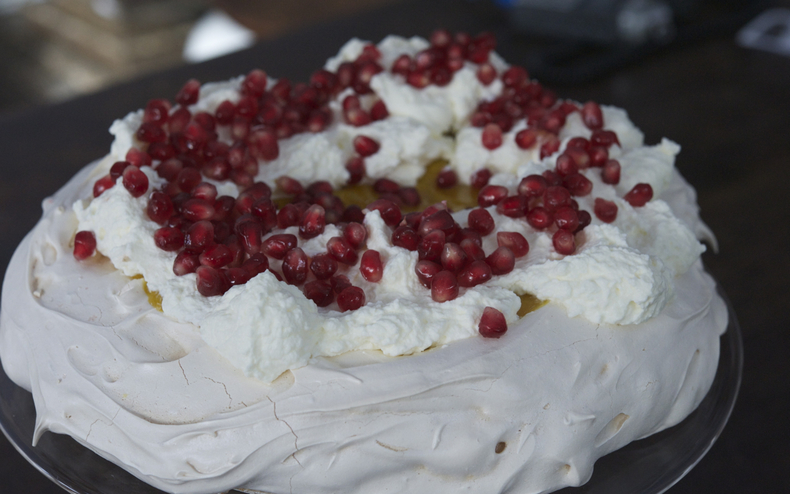
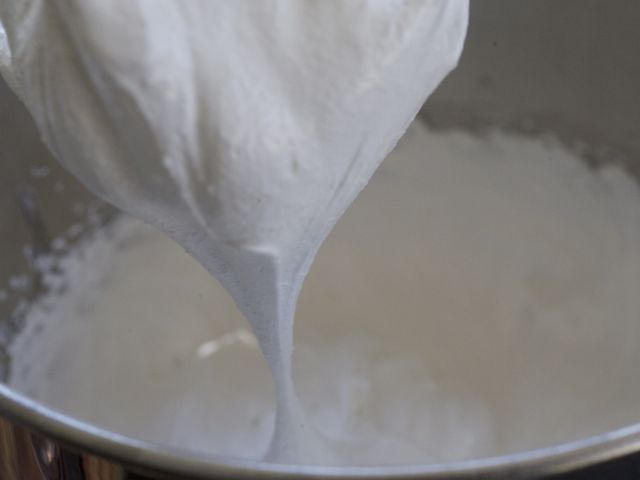
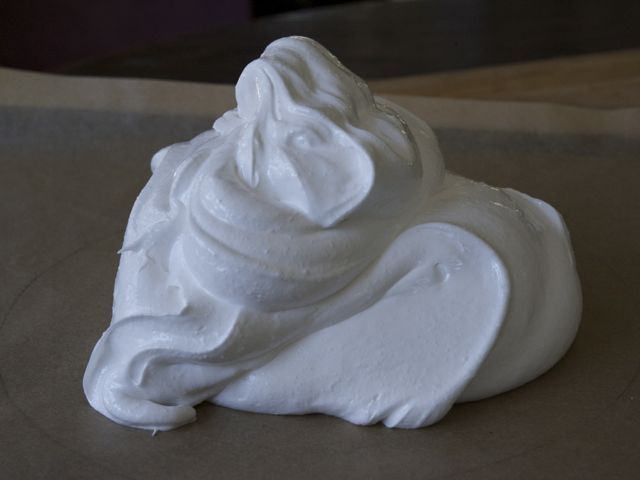
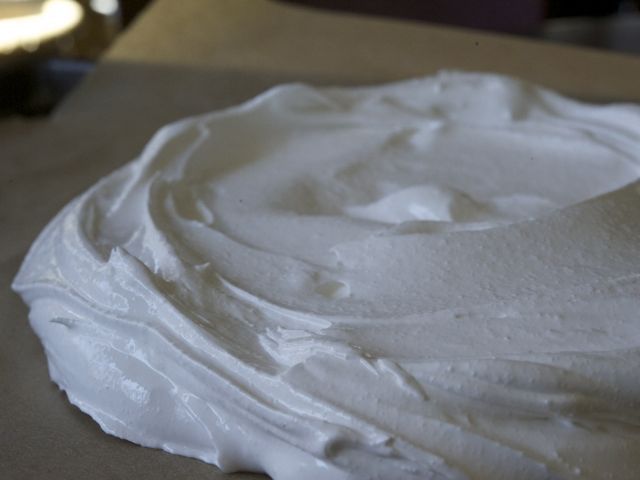
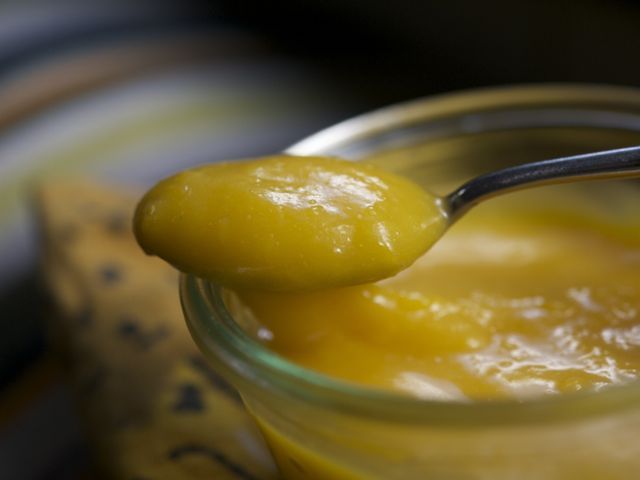
9 Comments